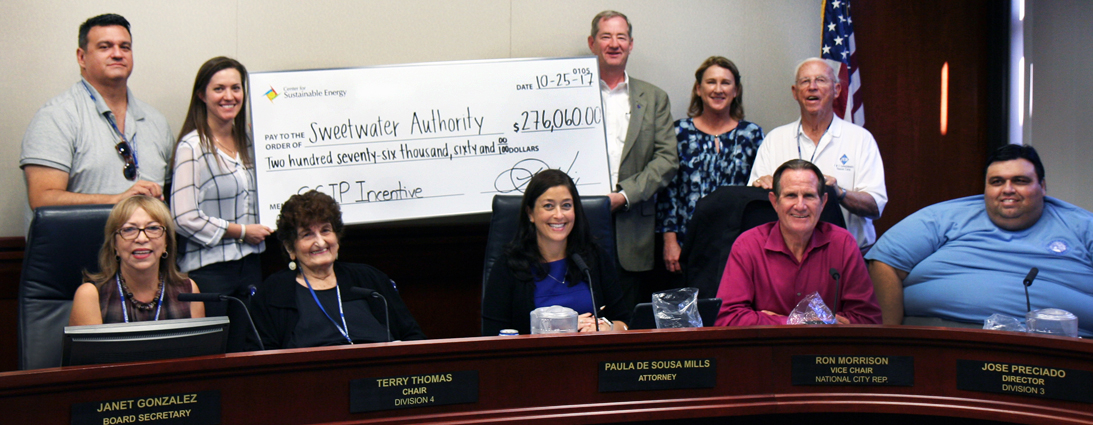

Renewable energy system reduces costs and greenhouse gas emissions
South Bay San Diego County residents supplied with water by the Sweetwater Authority are now benefitting from a cost-effective, new renewable energy system at the Robert A. Perdue Water Treatment Plant.
The water agency is using a hydroelectric generation technology that creates power from the reduction in pressure in water pipelines by converting mechanical energy into electrical energy. The system produces electricity on-site with no air pollution or greenhouse gas emissions. In the past ten months of test operations, the new system has generated 895,000 kilowatt-hours of electricity, reducing the plant’s carbon dioxide emissions by more than 665 metric tons, the equivalent to removing 143 cars from California roadways for one year.
Self-generation rebate
Sweetwater Authority is recouping roughly $552,000 of the system’s cost through a rebate from the California Self-Generation Incentive Program administered by the CSE in the San Diego Gas & Electric service territory.
CSE Executive Director and President Len Hering, RADM, USN (ret), presented a $276,060 check to the Sweetwater Authority’s Governing Board on October 25, representing half of the total rebate, with the remainder to be paid annually over five years based on the system’s performance.
“The Self-Generation Incentive Program is part of California’s efforts to lead the nation in the adoption of clean energy technologies,” Hering said. “Locally, San Diegans can benefit from such projects as the Sweetwater Authority’s new pressure reduction hydro-turbine installation as it produces renewable power, reduces electric grid demand and helps curb fossil fuel-generated greenhouse gas emissions."
The newly completed 590-kilowatt hydroelectric system harnesses high pressure from the imported water supply. The system routes the water to the turbines that reduce the pressure, while generators turn the mechanical energy into electricity. This form of hydroelectric generation, known as “in-conduit” generation, utilizes existing water conveyance pipes to produce electricity without burning fossil fuels, making it a renewable and sustainable source of power. The project was designed and installed by NLine Energy in El Dorado Hills, Calif.
SGIP in San Diego
Since 2001, CSE’s SGIP team has issued more than $150 million in incentives and approved nearly 83 megawatts of on-site generation capacity in the San Diego region for self-generation projects using pressure reduction turbines, energy storage, fuel cells and other technologies.
To learn more about pressure reduction turbines and other SGIP-incentivized energy technologies, visit the Self-Generation Incentive Program.
